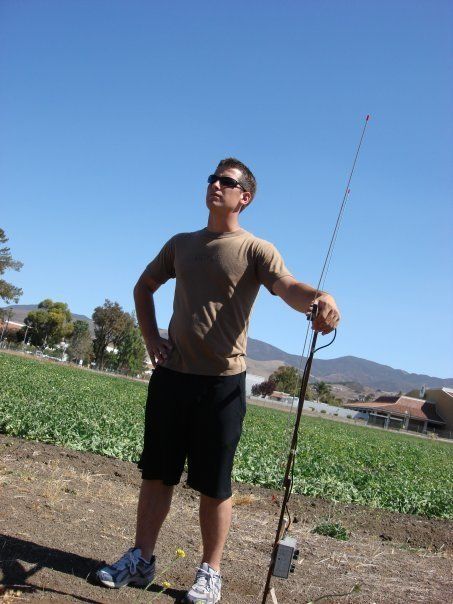OODA LOOP

Mike Doyle
Founder
Mike is a full-time police officer and tactical medic. He currently works as a K9 handler, SWAT team member, and Police Trainer. Mike started Tactical Tangents as part of his fundamental purpose to save lives. His goal is to enhance the survival of police officers and concerned citizens by helping them become better, smarter, faster, and more efficient. His opinions are for informational purposes only and do not reflect those of his employer or any other government agency.
21 Foot Rule
One of the patterns we have noticed lately is how intense the tactical community’s relationship with fads can be. The Sheepdog analogy is a useful way to help a young soldier or cop begin to understand that they have to be prepared to do violence, but in a constrained way. It tends to fall apart when taken too far, though. The Spartan legacy is useful in inspiring toughness – but that doesn’t mean you have to run around wearing a helmet and shield. In the tactical training telephone game, good ideas can morph into rules and then into obsessions, and in the process, they can lose their utility. One of the big ones is the 21-Foot Rule.
Teamwork
If you look around any professional workplace, you will see several types of leaders–by that I don’t just mean differing leadership styles, although that is part of it–I am talking about the types of leaders in a group who make the difference between a “loose gaggle” and a high-performance team. This discussion is going to focus on the informal leaders–the unappointed low- or middle-man who makes a difference. A new or inexperienced member of the group might be the type of person who owns their mistakes, never makes excuses, and humbly accepts criticism. You might be asking yourself, doesn’t that just make them a good follower?
Burning Alive
If you read some of the news articles about the recent apartment fire in London, you’ll see quite a bit of commentary about the panic encountered by people trapped on the upper floors of the building. Similar to the attacks on 9/11, people can be seen in YouTube videos jumping out of windows from heights that would seemingly guarantee their death.
One of the popular models in tactical decision making is the OODA loop, which stands for Observe, Orient, Decide, Act. A lot of people tend to over-simplify this concept. They view it as a linear cycle, or a checklist-–as if you move from one step to the other. It is a lot more complicated than that. Our individual orientation–which is a product of our identity, training, experience, and our moral compass–drives each step of the process. It controls not only what we see, but where we look. It controls not only what we decide, but provides us with an index of solutions. It describes a two-way interaction with our environment, and shows us that our adversaries have an Orientation, too.
Our orientation is an implicit filter through which we see a problem; Some observations lead us to bypass the deliberation process and arrive intuitively at our decision. Training plays a role here, and what we have to understand about this process is that even though we short-circuit the thinking brain in the moment, we spend time and effort developing those habits and algorithms, for better or worse. For example, we learn in training that when our gun goes “click,” we should “tap and rack.” When we think about bleeding control (particularly in tactical settings), we think about tourniquets. Every time we make a decision, we are making an educated guess. We use our actions to test that hypothesis and then we re-evaluate. The enemy reacts to us and we get feedback from each other. Under stress and in the moment, we learn how to make observations and arrive quickly at some conclusions without going through a lengthy analysis in our head.
That is a good thing, if we’ve done everything right. Where it gets us in trouble is when we over-commit or we miss the cues that those solutions don’t fit. Joshua Waitzkin describes in his book, The Art of Learning, that going from good to great means seeing the math without the numbers. In an operational sense, we want to be able to look at a problem and develop an accurate sense of what is happening, even if we don’t know what exactly the outcome will be. In other words, someone with an intuitive understanding of math can look at a problem and know, in a general sense, how complex it is and how the numbers or variables are going to transform–even though they haven’t worked out the exact numbers. In the end, they will know if their conclusion seems about right, or not.
To apply this in a tactical sense, we want to look at tactics we have trained ourselves for and ask difficult questions. Maybe a tourniquet isn’t the answer to today’s bleeding control problem. Maybe we can teach ourselves that a “failure to fire” click feels different than an “empty gun” click, which also feels different than a dead-trigger click–problems that each need to be handled differently. Strive to understand not only what to do, but why you do it. What we don’t want is to only teach ourselves to think in a rigid, “if this, then that,” way, because we won’t be flexible enough to adapt to real life. John Boyd, who came up with the OODA loop, said: “You gotta challenge all assumptions. If you don’t, what is doctrine on day one becomes dogma forever after.” Dig a little deeper. Find the ways you over-simplify or complicate your ability to problem-solve. If you think of any examples, please share!

0 Comments